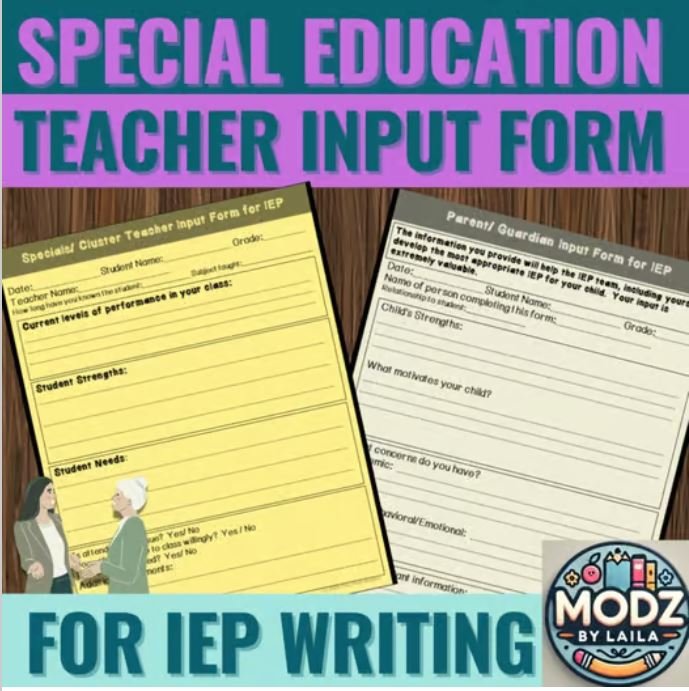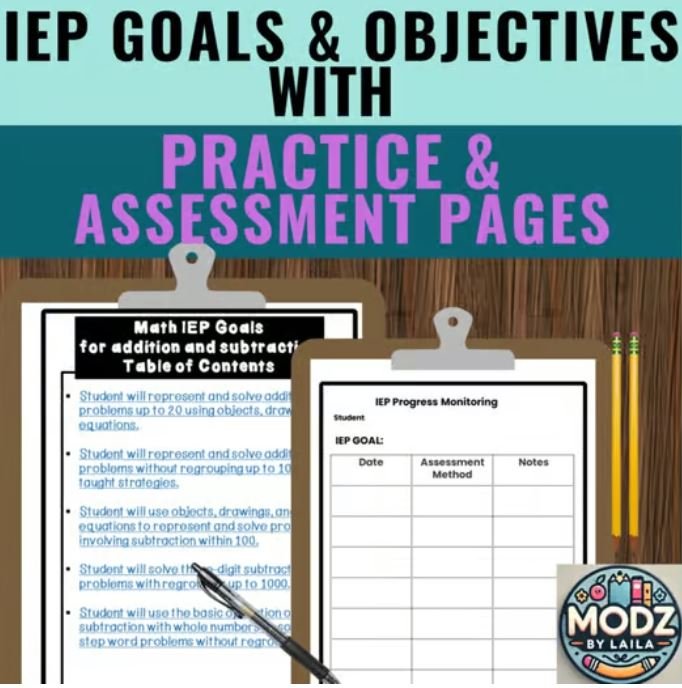Do you dread writing IEP’s?
I do too- but here’s some tips to make it just a little easier!
As special education teachers, one of our most important responsibilities is developing an Individualized Education Program (IEP) for each student. An IEP isn't just a document—it's a blueprint for success designed for each student. Writing an effective IEP can sometimes feel overwhelming, but with the right approach you can chunk it down and make the task a bit less daunting.
1. Start with the Student at the Center
The student is the heart of the IEP. If you are in the classroom everyday with the student you already have a ton of information about their strengths, needs, interests, and preferences. You are trying to paint a picture of the student for the next teacher, she he or she feels like they know the student from reading your IEP.
Get input from their parents or guardians. The more holistic your understanding, the more personalized and effective the IEP will be.
2. Use Data to Drive Decisions
Data is your best friend when it comes to writing an IEP. Use assessment data, progress monitoring, and observations to identify the student's present levels of academic achievement and functional performance. This data not only highlights where the student is but also guides the goals you set. Clear, data-driven goals ensure that the IEP is specific and measurable, making it easier to track progress and make adjustments as needed.
3. Set SMART Goals
When setting goals for the IEP, follow the SMART criteria: Specific, Measurable, Achievable, Relevant, and Time-bound. Instead of vague goals like "improve reading skills," aim for something more precise: "The student will increase reading comprehension to a third-grade level by the end of the school year, as measured by quarterly assessments." SMART goals give a clear direction and set expectations for everyone involved.
4. Incorporate Functional Skills and Life Skills
While academic goals are essential, remember that an IEP should also address functional and life skills. Consider the student’s needs in areas like social skills, communication, self-advocacy, and daily living skills. These skills ensure independence and long-term success, both inside and outside of the classroom.
5. Focus on Accessibility and Inclusion
Always keep accessibility and inclusion at the forefront when writing an IEP. Think about how the student can access the general education curriculum and participate with their peers as much as possible. This might mean incorporating assistive technology, modifying assignments, or providing additional support within the classroom. The goal is to provide the least restrictive environment while ensuring the student can thrive.
6. Maintain Clear and Effective Communication
Clear communication with all stakeholders—parents, students, teachers, and service providers—is vital. Be transparent about the goals, the strategies in place, and the student's progress. Regular updates help build trust and ensure everyone is on the same page, working together towards the student's success. It is ok for a student to not meet all their goals! Of course we want to be setting attainable goals, but life happens. Maybe an event happened that prevents your student from meeting his or her goal. Communicate this effectively to the team and revise the goal as appropriate.
7. Stay Positive and Encouraging
Finally, remember the power of positivity. Writing an IEP can be challenging, but it is also an opportunity to celebrate your students’ potential. Focus on their strengths and the progress they can make. A positive, can-do attitude can make a world of difference in motivating not just the student, but the entire IEP team.
Check out all my resources that will help you write effective IEPs!




